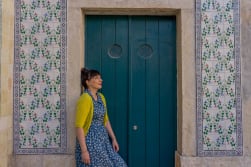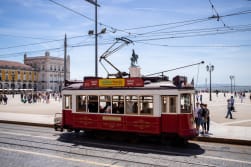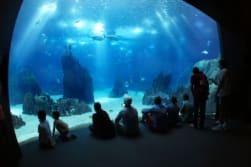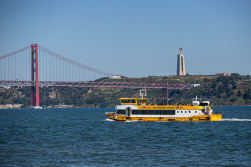Top 10 attractions in Lisbon
Lisbon is known - and searched - for a huge variety of reasons: from Gastronomy to the Discoveries, from Fado to the wonders of the immense Oceanarium... there are themes for all tastes, and for everyone to like Lisbon.
And so, we have named the city's ten tourist attractions, in no order of importance, because each one has its own special significance:
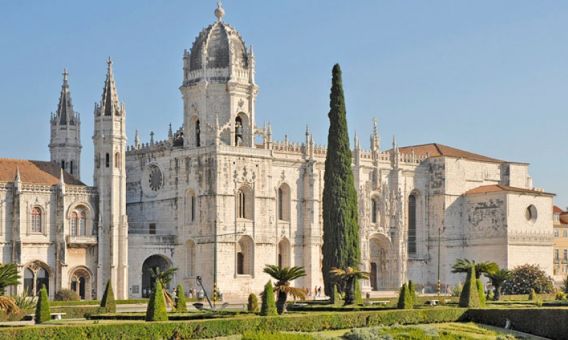
Jerónimos Monastery
It is on all the lists of places to visit in Lisbon: with its unique style, it records in its construction a whole testimony of the Discoveries' epic: the encounter with different cultures, the impact of finding "new worlds" already existing, the novelties that amazed us. It is an era that can be experienced by looking closely at the sculptural and decorative details on the walls, ceilings, and cloisters... it is the Manueline style, which impregnated the late Gothic with an enormous variety of themes linked to the sea and other cultures, that appears in the time of D. Manuel I. Here we can find the tomb of this king, as well as those of other figures who took part in the great adventure of setting off across the world to discover other worlds, such as Vasco da Gama and the epic poet Luís de Camões.

Pastéis de Belém
Besides becoming world famous - in some countries they are already called "Portuguese cakes" - we all have to agree that those who come to Lisbon do not want to leave us without trying this delicacy, so talked about among those who visit us. They appeared in the 19th century by the hand of the religious men who lived in the Jerónimos Monastery - and the secret of this recipe has been passed down through generations. These cakes have a crispy puff pastry base, and are filled with a milk cream, sprinkled with sugar and cinnamon. They are a favorite with a cup of coffee, or for a break without regard for quantity, since they are also sold in packs of half a dozen, warm and melting in the mouth. As they’re not big cakes, they bring the perfect excuse to never eat just one... Isn’t it true?

The Tramcars
When it passes by, we all want to get on, because the streetcar seems to promise us an adventure through the city. And it doesn't fool you! The small carriage has unique driving features - a sandbox (?)with sand to prevent brakes from sliding when the street is steep, a switch changer to change the line manually, and a rotating hand brake, reminiscent of a ship's rudder - among others. The up and down of the tracks through narrow streets, where the neighbors at the window spread their clothes on ropes and wave goodbye to us, the glimpse of stairways where in the background you can see the Tagus, the side by side passing by monuments like the Cathedral or the Church of Saint Anthony, with the house where this world famous saint was born. Riding the streetcar, more than experiencing an adventure on rails, is to integrate the picturesque scenery of the city - and appear in the postcards of souvenir stores!
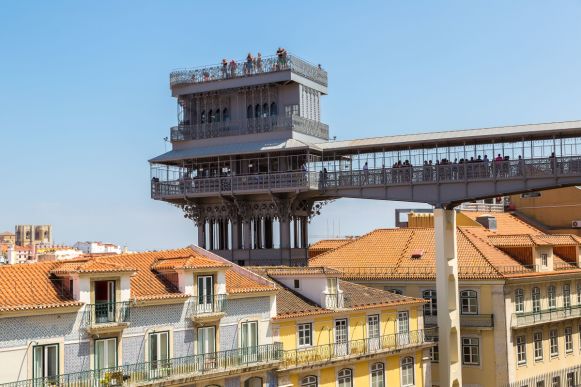
Santa Justa Lift
An iron tower in neo-Gothic style, with century-old cabins that rise to one of the most famous viewpoints in the city. We are talking about the Santa Justa lift, a national monument that is over one hundred years old and was created by Frenchman Raoul Mesnier du Ponsard, who is also responsible for the funiculars at the hills of Lisbon. If for Lisboners it is an "illustrious" transport that connects to the upper part of the city, for those who visit us, it is exciting to see how the cables work, the iron-colored laceworks, and at the end of the short trip, those breathtaking views.
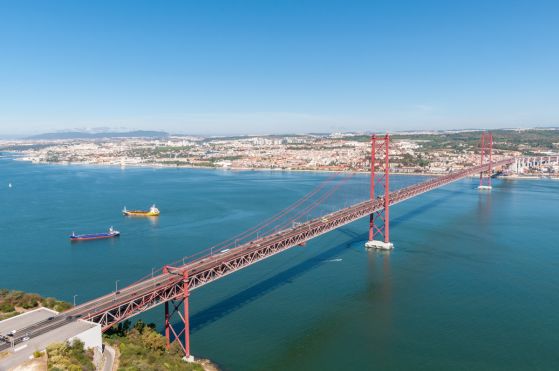
Tagus River
The river that is a little more than one thousand kilometers long, that originates in Spain and flows into the Atlantic, just outside Lisbon, has one of the widest estuaries in Europe that allows it to receive cruise ships right in the center of the city. On the Tagus River there are always recreational boats, sailing schools, special events and parties, which cross with the Ferries and Cacilheiros boats of regular public transport, creating a harmonious set of colors in the blue of the river and sky. When we are in the middle of the river, the city gains another perspective, as its shape of an amphitheater of hills reveals the city as a whole, leaning over the Tagus. The quiet undulation, the escape from the noises of the city, and the opportunity to get to know it as a whole, to take impressive panoramic pictures as the breeze approaches the sea, is one of the best experiences one can have in Lisbon. And since Lisbon is in great harmony with the river, being part of this scenery is something not to be missed. Live this experience aboard the Yellow Boat.
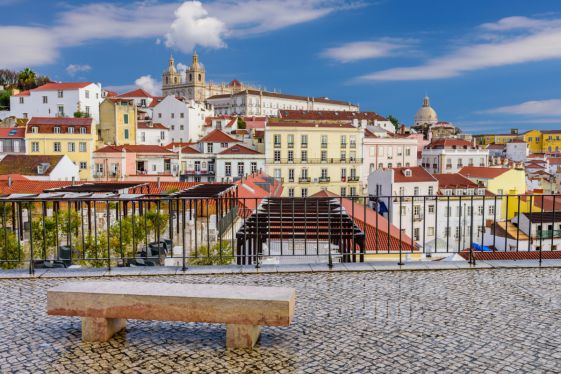
Alfama
The place where Lisbon was born, due to the water resources found there (the water from the Tagus River here is already salty, due to its proximity to the ocean).
Alfama, with its layout that tells about Moorish ancestors and influences of the Roman Empire in its archaeological findings, is a neighborhood of narrow streets, viewpoints over the Tagus River, flowered houses with ropes on the windows to spread clothes in the sun, staircases and small patios where children play under the watchful eye of their grandparents, who chat. It is the district of the Castle, of the famous Fado Houses - where you can hear this unique music that originated in Alfama - of the summer parties in the streets, celebrating the Saint Anthony that was born next to the old Cathedral. As the up and down of the streets is challenging, we see the streetcars passing by, ringing the bell as they go, always full of curious eyes and even amazed at the simplicity of everyday life, in a neighborhood inserted in the city, which has been cosmopolitan for centuries.
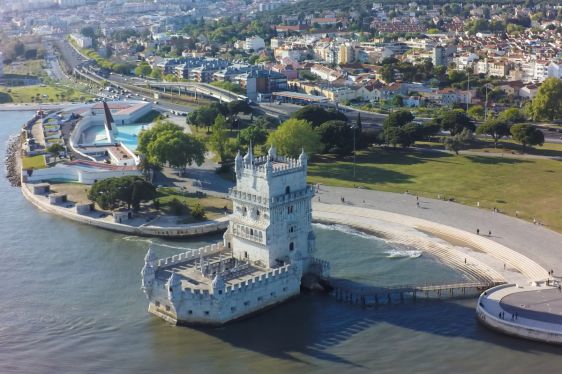
Belem Tower
Facing the river, Belem Tower is one of the most original buildings we find in the city. Once used to supervise the maritime traffic entering Lisbon, it was also from its windows that the kings saw the caravels departing towards the fascinating unknown. Its unique decoration in Manueline style captures all the details that were engraved in the memory of those who lived at sea, and of the different peoples and cultures, even the flora and fauna never seen before. The tower of Belém is a well-guarded jewel from the golden age of the Discoveries, and the emotions that its magnificence exerts on us make us travel back in time, while we savor the views over the Tagus River.
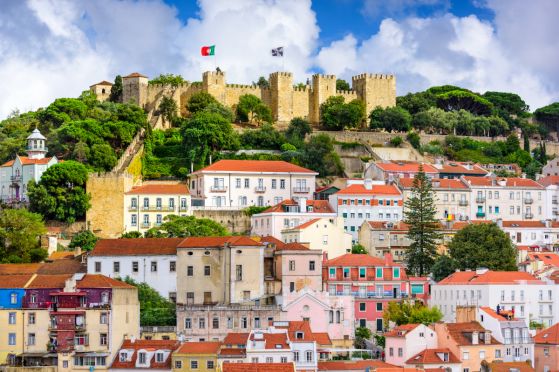
Saint George's Castle
There were already some fortified buildings on top of this hill many centuries ago, but the most told story takes us back to the time of our first king, Afonso Henriques, when he took the castle from the Moors who lived there in 1147. Until the construction of a royal palace, our kings lived here, and even when a palace already existed, our famous king D. Sebastião preferred the walled dwellings to the modernized palace for the royal family. Those who wander in the castle no longer experience these stories up close; but the moment they see the extraordinary panorama over Lisbon and the Tagus they realize why the Castle is one of the most wanted monuments on a visit to the city. And of course, they feel like conquering kings, high up on the walls.
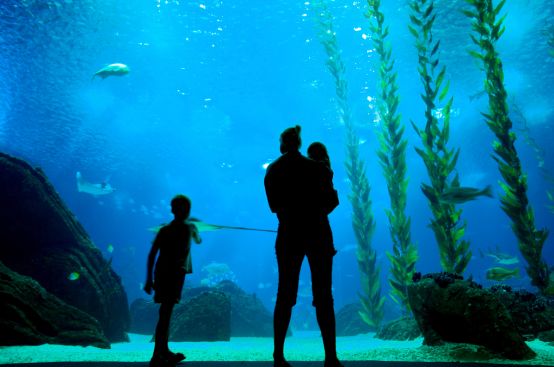
Oceanarium
One of the largest aquariums in the world appeared in Lisbon in 1998, during a world exhibition that had "the Oceans" as its theme.
It is inserted in this exhibition area, which was rehabilitated and today is the most modern area of the city. This large aquarium brings together the world's oceans and their habitats, where we can observe the marine life, going through the rooms that access each of these "oceans". The Oceanarium is a true permanent show of sea life that renews itself, full of colors and different creatures that we discover and leave us amazed: each visit leaves us with the feeling that it is always a first time. Perfect for those who are in love with the sea and its secrets, or for those who simply want to dive in this, always fascinating, world.
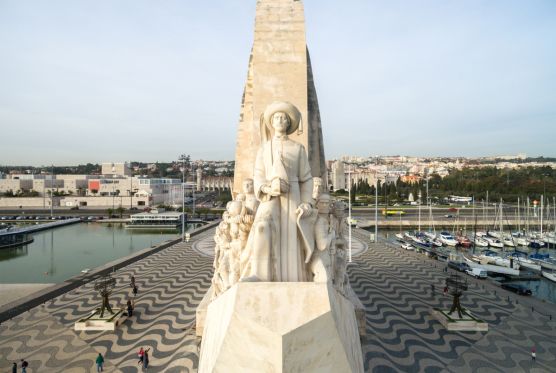
Monument to the Discoveries
If in Belém we find monumental buildings that evoke the time of the Discoveries and reach us from that same time, this is not the case of the Monument to the Discoveries, although it would make us think so; it dates from 1940.
Created to mark the glory of those who took part in the great adventure of the Discoveries, from nautical engineering, cartography, navigation, and other skills needed to reach "new worlds", here we find several figures, some of them already known from school books, such as Prince Henry the Navigator, Vasco da Gama, Ferdinand Magellan, and Pedro Álvares Cabral. Among others, in a total of 32 protagonists. Initially created in plaster and concrete, to integrate the Portuguese World Exhibition, it was later remade in 1960, in concrete and Rosal stone from Leiria. Next to the Monument, everyone marvels at the beautiful wind rose implemented in the sidewalk, allusive to the Portuguese expansion, which was a gift from the Republic of South Africa. And we all like to put our feet there, jumping from country to country or from one continent to another. Who doesn't?
This article concludes with the certainty of a countless number of other attractions that were not included in the top 10 - but that we would also like you to share with us on social media, all those that you have discovered on your own - we guarantee that you will be able to discover them all on our tours.


